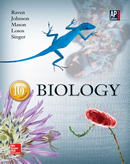1 A) changing sea levels B) increased frequency of extreme climatic events C) direct and indirect effects on agriculture D) expansion of tropical diseases E) All choices are correct. 2 A) There are fewer clouds in the tropics. B) The tropics receive more solar energy per unit area because of an almost perpendicular angle of incidence of sunlight. C) Tropical soils are chemically easier to heat than are temperate soils. D) The Earth spins the atmosphere in such a way that the heat gets trapped near the equator. E) It rains a lot in the tropics, and it tends to be warmer in wet areas than in dry areas. 3 A) rising and cooling; little B) rising and warming; much C) descending and warming; little D) descending and warming; much E) descending and cooling; little 4 A) eastern B) windward C) low D) high E) descending 5 A) cold; western Africa B) cold; western North America C) cold; western Australia D) cold; western Europe E) cold; western South America 6 A) temperature and soil type B) cloud cover and wind speed C) temperature and precipitation D) precipitation and soil type E) precipitation and wind speed 7 A) the rotation of the Earth B) local environmental conditions C) surface winds D) temperature differences between continents E) No choice is correct. 8 A) savanna B) temperate deciduous forest C) tundra D) taiga E) desert 9 A) The dissolved oxygen at the bottom level of the lake can be depleted by the end of summer. B) Dissolved oxygen remains constant throughout the year at all depths due to the formation of a thermocline. C) The dissolved oxygen at the bottom level of the lake can be depleted by the end of winter. D) The hypolimnion forms on the lake surface. E) No choice is correct. 10 A) The ocean currents are too strong for the phytoplankton. B) Nutrients for phytoplankton are in very low concentrations at the surface, in the photic zone. C) Pollution has killed most of the phytoplankton. D) All choices are correct. E) No choices are correct. 11 A) It has many different, small, independent sources. B) Regulation of diffuse pollution will be ineffective. C) It depends on changing the behavior of individuals. D) Many different chemicals are probably involved. E) All choices are correct. 12 A) none B) methane, nitrous oxide C) nitrous oxide, ozone D) ozone E) hydrogen sulfide 13 A) true B) false 14 A) characteristic vegetational structures B) particular plant species C) climatic conditions D) All choices are correct. E) No choices are correct. 15 A) highest number of species of any ecosystem B) unique three-dimensional habitat created by stony corals C) singularly diverse ecosystem D) uniquely located in the tropics and subtropics E) All choices are correct. 16 A) bat-sized worms B) occur where tectonic plates are moving apart C) depend on photic zone D) symbiotic bacteria oxidize hydrogen sulfide E) All choices are correct attributes. 17 A) It's the single largest habitat on Earth. B) Its average temperature is between 2 - 5 degrees centigrade. C) The deep sea is totally dark. D) The bottom is 4000- 5000 feet deep. E) It's under high pressure of 400 - 500 atmospheres. 18 A) true B) false 19 A) Nothing. The concentration of DDT in water was .000003 ppm. B) Eggshells became too thin to endure incubation; this caused a drastic population decline. C) Low concentrations accumulated in fatty tissues in those animals affected by DDT. D) Some carnivores experienced a dramatic increase in a particular array of cancers. E) No choice is correct. 20 A) pollution B) use of wild-caught fish for aquaculture C) destruction of coastal ecosystems D) destruction of salt marshes E) All choices are correct. 21 A) all year B) April to October C) August to December D) randomly for periods of several months E) No choice is correct.





